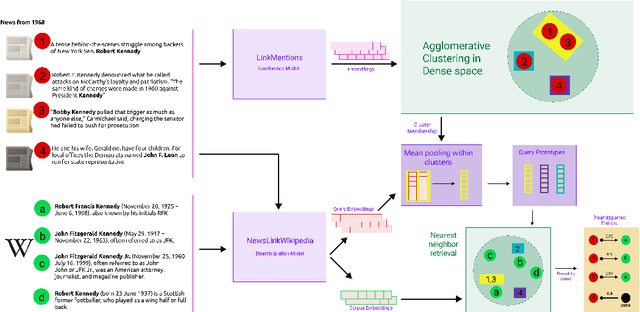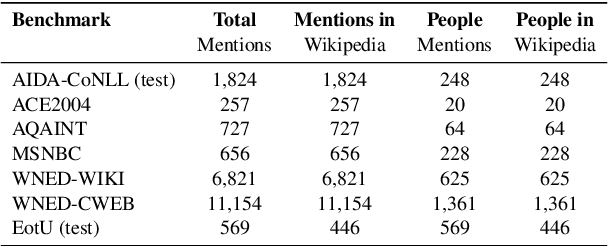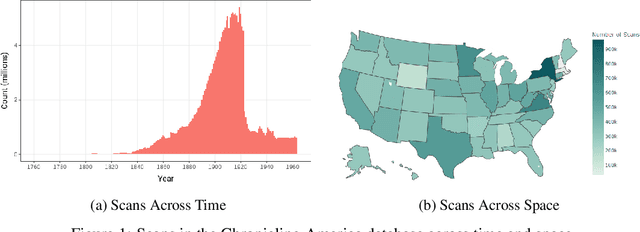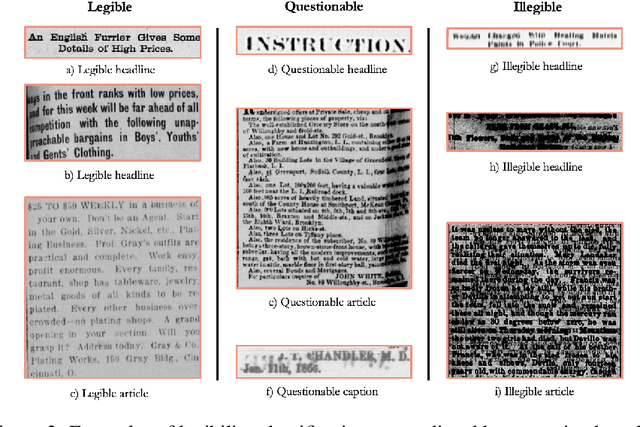Leander Heldring
Contrastive Entity Coreference and Disambiguation for Historical Texts
Jun 21, 2024



Abstract:Massive-scale historical document collections are crucial for social science research. Despite increasing digitization, these documents typically lack unique cross-document identifiers for individuals mentioned within the texts, as well as individual identifiers from external knowledgebases like Wikipedia/Wikidata. Existing entity disambiguation methods often fall short in accuracy for historical documents, which are replete with individuals not remembered in contemporary knowledgebases. This study makes three key contributions to improve cross-document coreference resolution and disambiguation in historical texts: a massive-scale training dataset replete with hard negatives - that sources over 190 million entity pairs from Wikipedia contexts and disambiguation pages - high-quality evaluation data from hand-labeled historical newswire articles, and trained models evaluated on this historical benchmark. We contrastively train bi-encoder models for coreferencing and disambiguating individuals in historical texts, achieving accurate, scalable performance that identifies out-of-knowledgebase individuals. Our approach significantly surpasses other entity disambiguation models on our historical newswire benchmark. Our models also demonstrate competitive performance on modern entity disambiguation benchmarks, particularly certain news disambiguation datasets.
American Stories: A Large-Scale Structured Text Dataset of Historical U.S. Newspapers
Aug 24, 2023



Abstract:Existing full text datasets of U.S. public domain newspapers do not recognize the often complex layouts of newspaper scans, and as a result the digitized content scrambles texts from articles, headlines, captions, advertisements, and other layout regions. OCR quality can also be low. This study develops a novel, deep learning pipeline for extracting full article texts from newspaper images and applies it to the nearly 20 million scans in Library of Congress's public domain Chronicling America collection. The pipeline includes layout detection, legibility classification, custom OCR, and association of article texts spanning multiple bounding boxes. To achieve high scalability, it is built with efficient architectures designed for mobile phones. The resulting American Stories dataset provides high quality data that could be used for pre-training a large language model to achieve better understanding of historical English and historical world knowledge. The dataset could also be added to the external database of a retrieval-augmented language model to make historical information - ranging from interpretations of political events to minutiae about the lives of people's ancestors - more widely accessible. Furthermore, structured article texts facilitate using transformer-based methods for popular social science applications like topic classification, detection of reproduced content, and news story clustering. Finally, American Stories provides a massive silver quality dataset for innovating multimodal layout analysis models and other multimodal applications.
 Add to Chrome
Add to Chrome Add to Firefox
Add to Firefox Add to Edge
Add to Edge